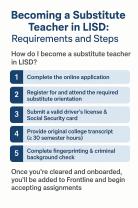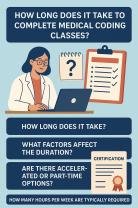What is a macroeconomics course?
A macroeconomics course is a branch of economics that focuses on the study of the economy as a whole, rather than individual markets or specific economic agents. It examines aggregate phenomena such as national income, employment, inflation, economic growth, and the overall price level in an entire economy. Macroeconomics seeks to understand the broader patterns and trends that shape the economic performance of a country or region.
Here's an overview of key topics typically covered in a macroeconomics course:
Gross Domestic Product (GDP):
- GDP is a fundamental measure of a nation's economic performance. Macroeconomics courses often cover how to calculate GDP, the different approaches to measuring it, and its significance as an indicator of economic health.
Unemployment:
- The study of unemployment involves analyzing the factors that contribute to joblessness in an economy, understanding different types of unemployment, and exploring policies aimed at reducing unemployment rates.
Inflation:
- Inflation is the rate at which the general level of prices for goods and services rises, leading to a decrease in the purchasing power of a currency. Macroeconomics courses examine the causes and consequences of inflation and its impact on various economic agents.
Macroeconomic Models:
- Students often learn about different macroeconomic models, including classical, Keynesian, and monetarist perspectives. These models provide frameworks for understanding how the economy functions and how it responds to various shocks and policy changes.
Fiscal Policy:
- Fiscal policy involves government decisions related to taxation and spending. Macroeconomics courses explore how fiscal policy tools can be used to influence economic activity, stabilize the economy, and address issues such as recession or inflation.
Monetary Policy:
- Monetary policy, controlled by central banks, involves managing the money supply and interest rates to achieve economic goals. Students learn about the role of central banks, the money supply, and the tools used to influence economic conditions.
Exchange Rates and International Trade:
- Macroeconomics courses often cover international aspects of economics, including exchange rates, balance of payments, and the impact of trade on national economies. Global economic interdependence is a key focus.
Economic Growth:
- Understanding the determinants of long-term economic growth is a central theme in macroeconomics. Students explore factors such as technological progress, human capital, and productivity that contribute to sustained economic development.
Aggregate Supply and Demand:
- The aggregate supply and demand framework is a key concept in macroeconomics. Students analyze how changes in aggregate demand and aggregate supply affect output, employment, and price levels in an economy.
Economic Indicators:
- Macroeconomics courses often introduce students to various economic indicators such as leading indicators, lagging indicators, and coincident indicators. These indicators help assess the current and future economic conditions.
Macroeconomics plays a crucial role in informing policymakers, businesses, and individuals about the overall health and functioning of an economy. It provides tools and concepts that help analyze economic trends, make informed decisions, and understand the potential impact of economic policies on a national or global scale.
Overview and Scope of Macroeconomics Courses:
Macroeconomics delves into the big picture of an economy, analyzing its aggregate behavior and performance. Introductory courses typically cover foundational concepts and build towards increasingly complex models and theories. Here's a general overview:
Topics:
- National Income and Output: Measuring economic activity through GDP, income levels, and economic growth.
- Unemployment and Inflation: Understanding causes and consequences of these major economic challenges.
- Money and Banking: Exploring the role of monetary institutions, monetary policy, and its impact on the economy.
- Fiscal Policy: Analyzing the use of government spending and taxation to influence economic outcomes.
- Economic Growth and Development: Investigating determinants of long-term economic progress and addressing issues like poverty and inequality.
- International Trade and Finance: Examining global economic interactions, exchange rates, and trade policies.
Learning Objectives:
- Develop a critical understanding of macroeconomic principles and theories.
- Analyze economic data and interpret economic indicators.
- Evaluate the effectiveness of government policies in achieving economic goals.
- Formulate well-informed opinions on current economic issues.
- Prepare for further study in economics or related fields.
Course Structures:
- Introductory courses often begin with foundational concepts like supply and demand, then build progressively towards more complex topics.
- Courses may combine lectures, discussions, problem-solving sessions, and case studies to provide a well-rounded learning experience.
- Some courses may offer specialized tracks or electives focusing on specific areas like monetary policy, economic development, or international finance.
Core Concepts Covered in Macroeconomics Curriculum:
Here are some core concepts students encounter in introductory macroeconomics courses:
- Scarcity and Choice: Understanding the fundamental economic problem of limited resources and unlimited wants.
- Markets and Prices: How supply and demand interact to determine prices and resource allocation.
- National Income Accounting: Measuring economic activity through concepts like GDP, consumption, investment, and government spending.
- Economic Growth: Factors influencing long-term economic growth, including technological advancements, human capital, and institutional factors.
- Unemployment: Types of unemployment (frictional, structural, cyclical), causes, and consequences.
- Inflation: Understanding different types of inflation, causes, and its impact on the economy.
- Money and Banking: The role of money, the banking system, and monetary policy in influencing economic activity.
- Fiscal Policy: How government spending and taxation can be used to stabilize the economy, promote growth, and achieve other policy goals.
- International Trade and Finance: Balance of payments, exchange rates, trade policies, and their impact on domestic economies.
Real-world Applications of Macroeconomics Principles:
Macroeconomic principles have countless real-world applications in various fields:
- Policymaking: Governments use macroeconomic models to formulate policies concerning taxation, spending, interest rates, and trade to achieve desired economic outcomes.
- Business and Finance: Businesses use macroeconomic analysis to assess market conditions, forecast demand, and make investment decisions.
- International Relations: Understanding global economic trends and relationships between countries is crucial for international trade, development, and diplomacy.
- Personal Finance: Knowledge of inflation, interest rates, and economic cycles can help individuals make informed investment and financial planning decisions.
- Social and Public Policy: Macroeconomic analysis plays a vital role in addressing issues like poverty, inequality, healthcare, and education.
By studying macroeconomics, individuals gain a valuable perspective on the complex workings of modern economies and can apply this knowledge to various spheres of life, becoming more informed citizens, responsible consumers, and effective professionals in diverse fields.
I hope this overview provides a helpful starting point for exploring the fascinating world of macroeconomics! Feel free to ask any further questions you may have about specific concepts or their real-world applications.












